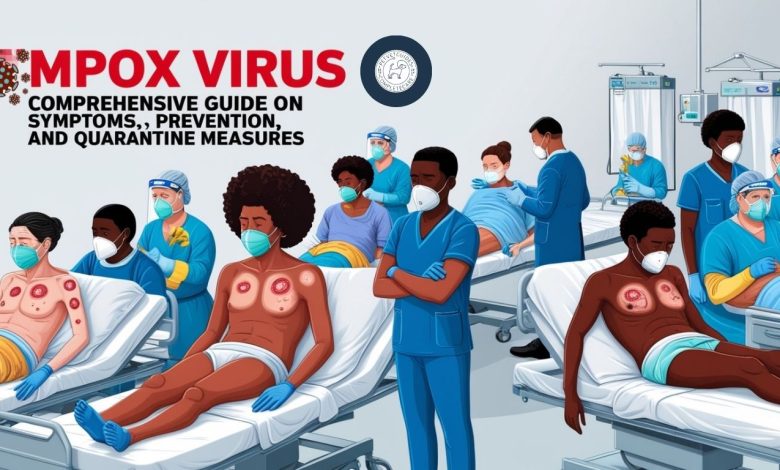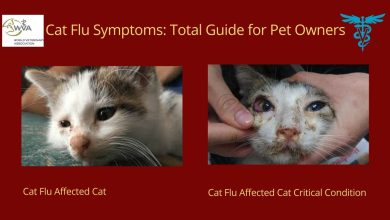Mpox Virus: Comprehensive Guide on Symptoms, Prevention, and Quarantine Measures

Introduction to Mpox Virus
The Mpox virus, previously known as monkeypox, is a zoonotic virus belonging to the Orthopoxvirus genus, which also includes the variola virus responsible for smallpox. Initially identified in 1958 in colonies of monkeys kept for research, the virus has since been discovered to be more commonly transmitted by rodents, particularly in regions of Central and West Africa. Though relatively rare, Mpox has gained attention due to its ability to cause outbreaks with significant human impact.
Table of Contents
History of Mpox Virus
The Mpox virus was first identified in 1958, when two outbreaks of a pox-like disease occurred in research monkeys. The first human case was recorded in 1970 in the Democratic Republic of the Congo during intensified efforts to eliminate smallpox. Since then, the virus has been reported in various Central and West African countries, with sporadic outbreaks occurring outside Africa, often linked to imported animals.
Types of Mpox Virus
There are two different genetic groups of the Mpox virus:
1. Central African (Congo Basin) Clade: This clade is more virulent and has a higher mortality rate. It is responsible for most of the severe cases reported in Africa.
2. West African Clade: This clade is less severe, with lower mortality rates. It has been responsible for most of the cases outside of Africa.
Know The Right Cause : Visit Now
How the Mpox Virus Spreads
Animal-to-Human Transmission
The Mpox virus primarily spreads from animals to humans. This transmission occurs through direct contact with the blood, bodily fluids, or cutaneous or mucosal lesions of infected animals. Handling bushmeat, bites, or scratches from infected animals are common ways the virus can spread to humans.
Human-to-Human Transmission
Human-to-human transmission of Mpox is less common but can occur through respiratory droplets, direct contact with body fluids or lesion material, and indirect contact through contaminated items such as bedding. The virus can also be transmitted from mother to fetus through the placenta.
Environmental Factors
Environmental factors, such as deforestation and climate change, can influence the spread of Mpox by altering the habitats of animal reservoirs, increasing the likelihood of human contact with infected animals.
Read About Rabies & The Effects : Read Now
Symptoms of Mpox Virus
The symptoms of Mpox typically begin with a fever, headache, muscle aches, and exhaustion. A key feature that distinguishes Mpox from smallpox is the development of swollen lymph nodes (lymphadenopathy). The incubation period for the virus is generally 7-14 days but can range from 5-21 days.
After the initial symptoms, a rash develops, starting on the face and then spreading to other parts of the body, including the palms of the hands and soles of the feet. The rash goes through different stages—macules, papules, vesicles, pustules—before eventually forming scabs that fall off. The illness usually lasts for 2-4 weeks.
Impact on Humans
The Mpox virus can have a significant impact on human health, particularly in individuals with weakened immune systems, children, and pregnant women. While most people recover from Mpox, complications can occur, leading to secondary infections, bronchopneumonia, sepsis, encephalitis, and eye infections that can result in loss of vision.
Mortality Rate
The mortality rate for the Central African clade can be as high as 10%, while the West African clade typically has a lower mortality rate of 1-3%. However, these rates can vary based on factors such as access to healthcare and the presence of underlying health conditions.
Diagnosis of Mpox Virus
Clinical Diagnosis
Clinically, Mpox can be suspected based on the characteristic rash and associated symptoms, especially if the patient has a history of contact with infected animals or travel to endemic areas. Swollen lymph nodes are a key clinical feature.
Laboratory Testing
Confirmation of Mpox requires laboratory testing, typically using Polymerase Chain Reaction (PCR) to detect viral DNA in samples taken from lesions. Other methods, such as virus isolation and serological testing, can also be used, but they are less commonly employed in routine diagnosis.
Prevention Methods
Preventing the spread of Mpox involves both personal protective measures and public health interventions.
Personal Protective Measures
– Avoid Contact with Wild Animals: Avoid handling animals that could harbor the virus, particularly in regions where Mpox is known to occur.
– Safe Food Practices: Ensure all animal products are thoroughly cooked before consumption.
– Hand Hygiene: Regular hand washing with soap and water, or using alcohol-based hand sanitizers, can reduce the risk of transmission.
Public Health Interventions
– Surveillance and Rapid Response: Monitoring for outbreaks and quick response to reported cases can help contain the spread.
– Vaccination: Vaccination with the smallpox vaccine, JYNNEOS (also known as Imvamune or Imvanex), has shown to be effective in preventing Mpox. The vaccine is typically administered to individuals at high risk of exposure, including healthcare workers and laboratory personnel. The cost of the vaccine can vary, with prices ranging from $100 to $200 per dose, depending on the region and availability.
What to Do During Quarantine
If an individual is suspected or confirmed to have Mpox, quarantine is essential to prevent the spread of the virus.
Proper Quarantine Procedures
– Isolation: The infected individual should be isolated in a separate room away from other household members.
– Use of PPE: Caregivers should use personal protective equipment (PPE) such as masks, gloves, and gowns when caring for the infected person.
– Disinfection: Regular disinfection of surfaces and proper disposal of contaminated materials is crucial.
– Monitoring: Close monitoring of symptoms and seeking medical advice if the condition worsens is important.
Psychological and Social Support
Quarantine can be stressful, so it’s important to ensure that the individual receives psychological support and maintains social connections through virtual means.
Conclusion
The Mpox virus remains a significant public health concern, particularly in regions where the virus is endemic. Understanding its history, transmission, symptoms, and prevention strategies is essential for controlling its spread and protecting public health. With effective diagnosis, vaccination, and quarantine measures, the impact of Mpox can be mitigated, ensuring better outcomes for those affected.For more detailed information on zoonotic diseases, visit the [World Health Organization (WHO) website]



